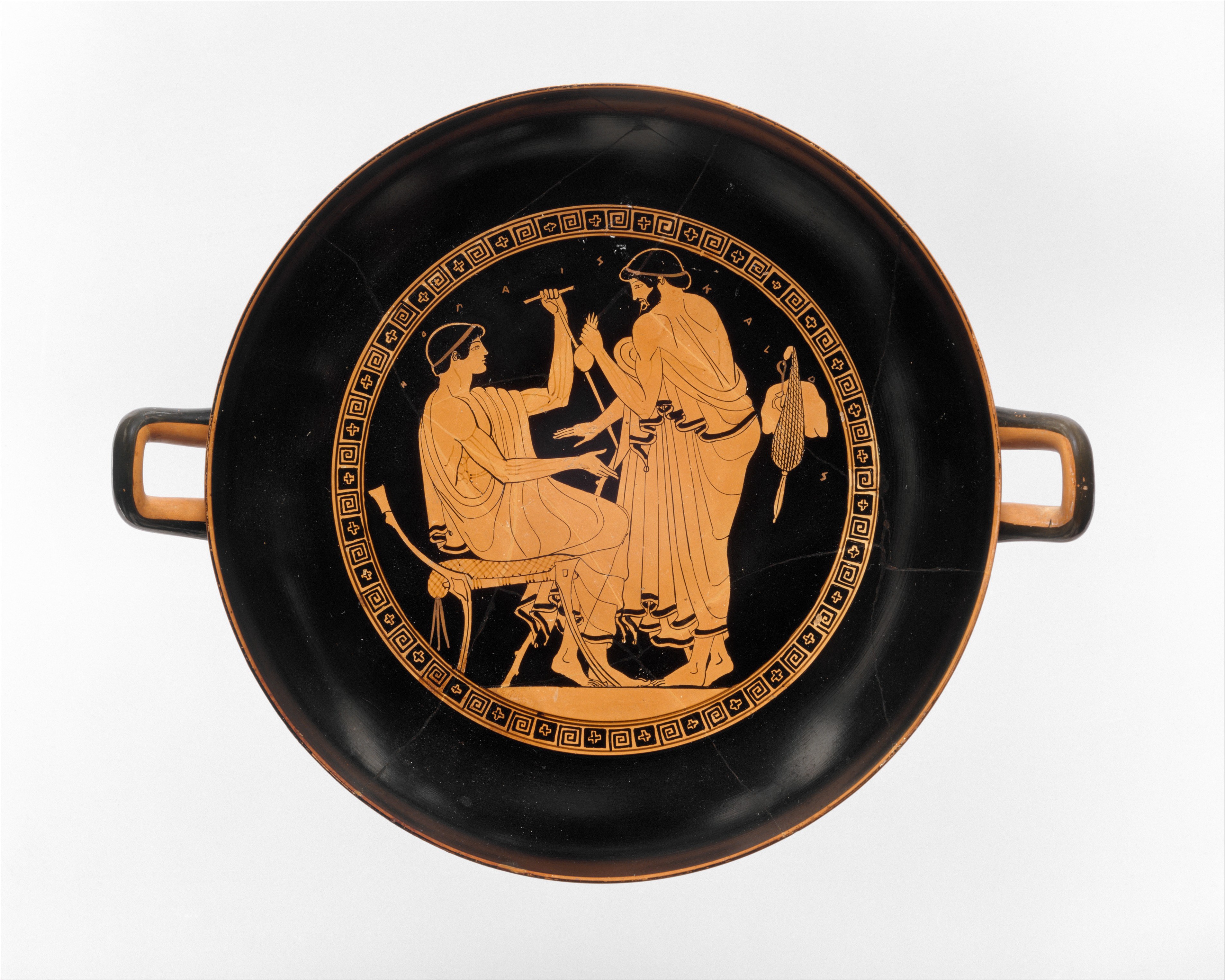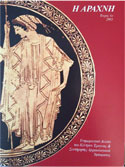June's word: Himatia elaiopine
MET Douris kylix 52.11.4.jpg

Men wearing himatia. Kylix of Douris, 480-470 BC. Metropolitan Museum (Public domain) | www.artextiles.org
Spring has gone by, with us hardly feeling it. Summer is coming and we have to dress, or better, undress, accordingly.
Hippocrates (Salubr. 3.6) recommends us to wear garments treated with olive oil!
“Ἠμφιέσθαι δὲ χρὴ τοῦ μὲν χειμῶνος καθαρὰ ἱμάτια, τοῦ δὲ θέρεος ἐλαιοπινέα.”
Simple garments in the winter, treated with oil in the summer. Oil against the heat? It is a question to be answered.
From written sources we learn about the use of olive oil in textile production and even in different stages of the chaîne opératoire (spinning, weaving, finishing).
Ἐλαία (and ἐλάα) ἔλαιον < ἐλαίϝα ἔλαιϝον, hence the u of the latin loanword oliua oleum that is conserved in the Modern languages (from ϝ, olive etc.). Τhe two phonemes /e/ > /o/ are related and the /o/ is nothing but the other degree of /e/. It is found as early as the Linear B (erawa, erawo). Since it is quite impossible that the Greeks carried roots of olive trees in their backpacks when coming to the area, which would later be called Greece, they must have found both the tree and the term at the Mediterranean.
Let us note that the πιν- of ἐλαιοπινὴς has nothing to do with πίν-ω, to drink in Modern Greek; -πινής, from πίνος, with unknown etymology, signifies dirt, in the hair, but especially in wool, πινηρὰ ἔρια.
In another post we will analyse the treatments of textiles with olive oil a little more, since according to Aristarchus βέλτιον λαμπρύνεται ἐλαιωτῷ.


